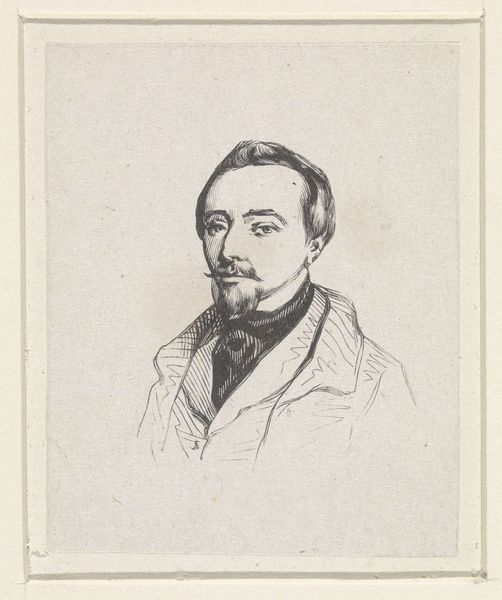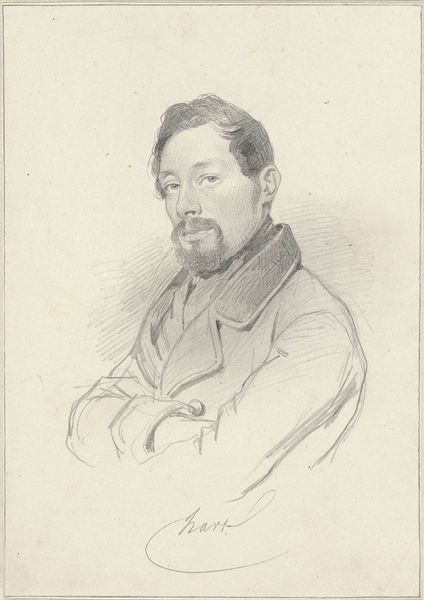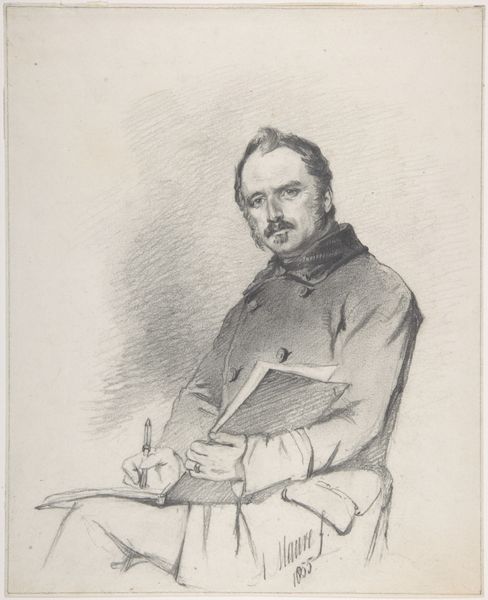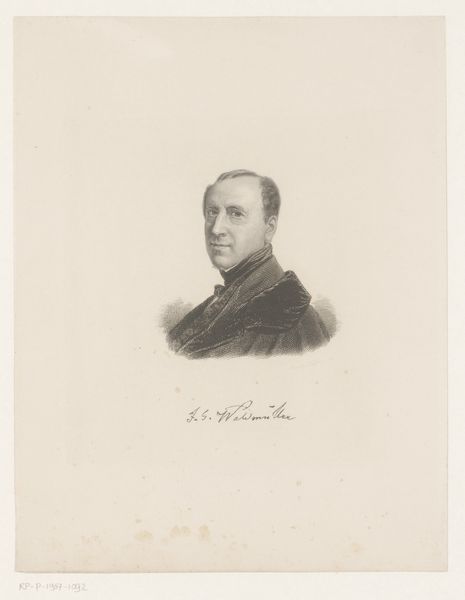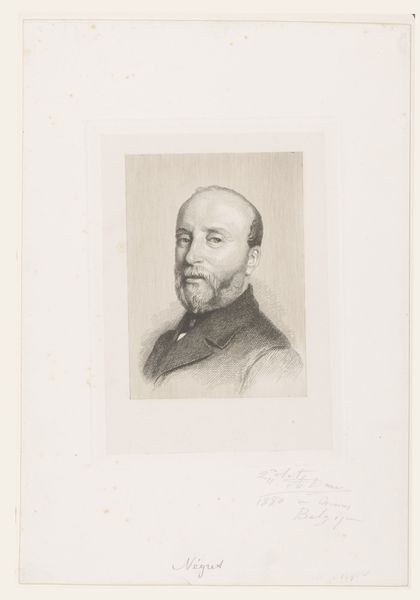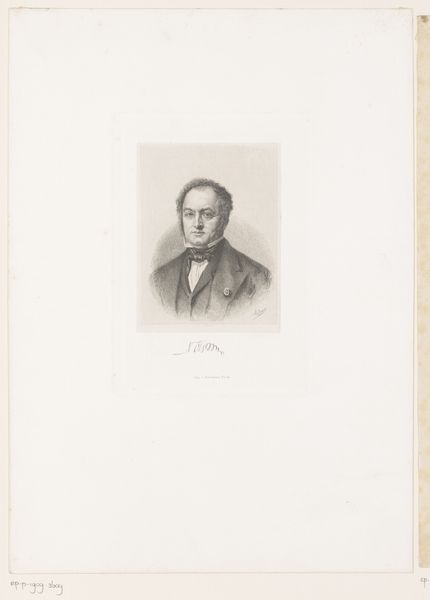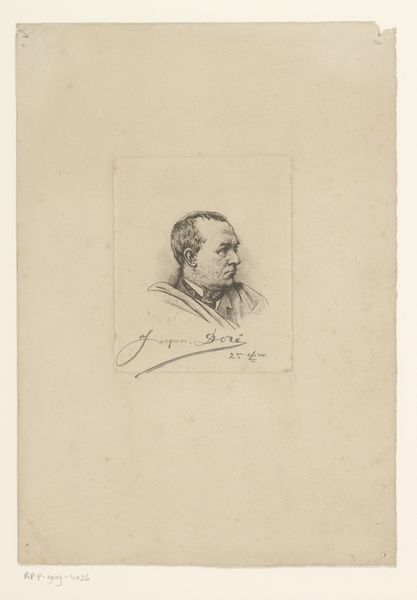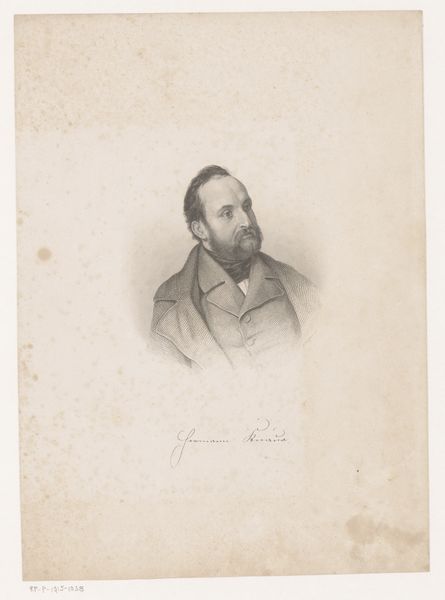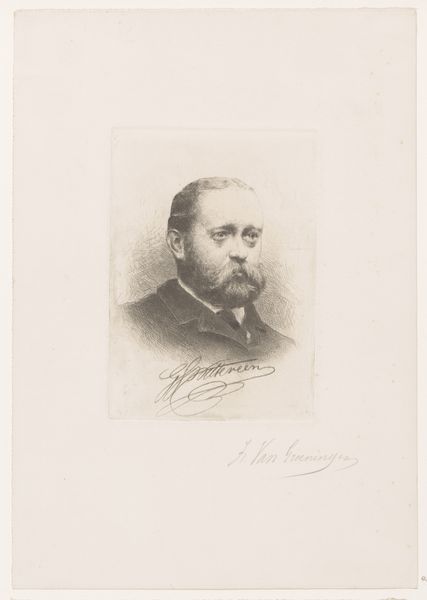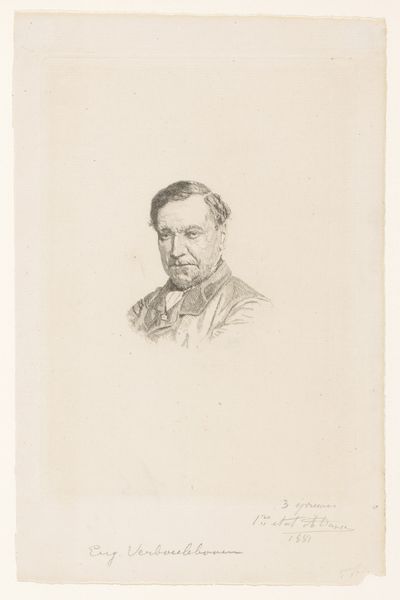
drawing, pencil
#
portrait
#
drawing
#
caricature
#
figuration
#
pencil drawing
#
romanticism
#
pencil
Dimensions: height 142 mm, width 108 mm
Copyright: Rijks Museum: Open Domain
Curator: Before us is a pencil drawing entitled "Portret van Jean Pierre Cluysenaar," created sometime between 1841 and 1842. What are your first impressions? Editor: Somber. There's a tentative quality to the line work. It seems less a definitive portrait and more of a study in capturing a likeness. I wonder what accounts for this style during this historical moment. Curator: Well, pencil drawings, unlike oils, allow for a different speed of execution, a different interaction with the model and indeed the materials. One could argue, given Cluysenaar's role in Brussels' architecture, that this rapid sketching might tie directly into the working practices within the booming construction industries. It mirrors the speed of urban expansion and architectural planning of the time, doesn't it? Editor: I suppose so. I see something quite different in the lines themselves. The rendering of the face, the soft modeling... it points more to an engagement with Romantic ideals. Look at the way light catches the planes of his face, the attention given to his gaze. To me, it indicates a kind of interiority, a soulfulness that Romanticism privileged. It also calls into question the material conditions in which artists have to render a portrait. Curator: The contrast between the sharply defined facial features and the hazier details of his attire certainly creates that tension between a recognizable figure and an implied depth. And considering how vital portraiture was for solidifying status, how does a humble drawing shape, reflect, or even subvert class relations? Editor: Precisely, the tension between the visible and the implied, the sharpness against the soft smudging...these compositional choices give an intimate sense of the subject beyond simply their socioeconomic positioning within the artwork. Curator: So the use of pencil as a medium moves beyond simple economic limitations, and towards enabling this artistic interpretation and deeper, possibly more relatable, impression on the viewer? Editor: Yes, for all its delicate form, the emotional weight of the picture seems to suggest more complex dimensions than a straightfoward and pragmatic use. Curator: It's interesting to see how we each see a portrait--either as an emotional or material statement! Editor: Indeed! Analyzing the relationship between an artist and subject never ceases to provide ample food for thought.
Comments
No comments
Be the first to comment and join the conversation on the ultimate creative platform.
